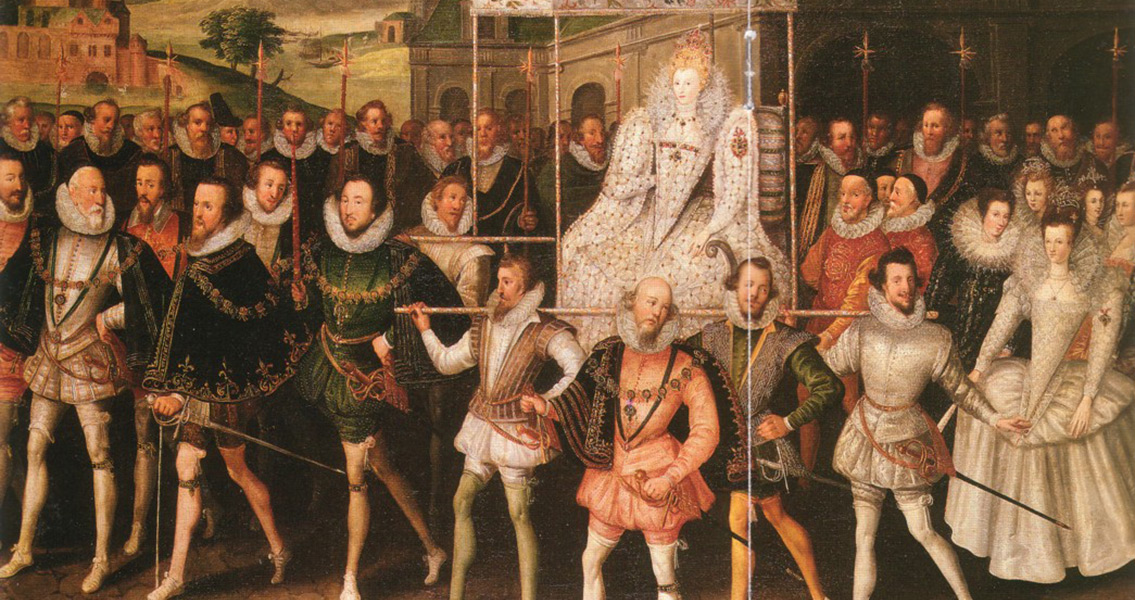<![CDATA[On the 15th January 1559 Elizabeth I was crowned queen of England. Her reign coincided with an eventful period in English history, and her crowning can be viewed as the beginning of a defining period in the country's past. Elizabeth, born in 1533, was the daughter of Henry VIII and Anne Boleyn. When Elizabeth was just two years old her mother was beheaded on charges of adultery, the execution ordered by Henry. Following her mother's death Elizabeth was exiled from court. Henry's sixth wife took an interest in Elizabeth however, and made sure she received a good education, resulting in Elizabeth becoming fluent in six languages. In 1553 Elizabeth's half sister Mary inherited the throne in England, signaling the start of a tumultuous five years. Mary had been raised a Catholic, and she quickly moved to halt the Reformation and reestablish Catholicism as the primary religion in England. Her reign witnessed a host of pro-Catholic legislation, and a drive to restore papal supremacy over England. Mary viewed her Protestant half sister as a threat, and had her imprisoned in the Tower of London, accused of fostering a Protestant rebellion. Mary's death in 1558 saw Elizabeth succeed to the throne. Her first aim was to return the Protestant faith to England, however, she also seemed to encourage a greater level of religious tolerance. Attempting to avoid triggering the traditional rivalry between Catholics and Protestants, she founded the Church of England in 1563 based on the 39 Articles, a document which stated that the new Church should make some concessions to Catholic traditions. Elizabeth famously stated that she did not wish to "make windows into men's soles". She seemed content as long as her subjects gave the impression of conformity, and felt no need to tamper with their deeper personal beliefs. During her reign Elizabeth frequently demonstrated her political astuteness. She understood the importance of being visible to her people to encourage their loyalty, and undertook 25 regional visits during her 45 year reign. She also assembled an administration of strong and loyal advisers, including Lord Burghley as her Secretary of State and Sir Francis Walsingham as her Intelligence chief. In terms of foreign policy Elizabeth courted international controversy while also laying the foundations for Britain's future naval dominance. Opposed by the pope, who considered her an illegitimate ruler, Elizabeth worked to strengthen Britain's Protestant allies on the continent. As Catholic Spain reached the height of its power, King Phillip II amassed a Great Armada with the intention of invading England, in a bid to halt its growing power and to return the country to Catholicism. The invasion was eventually aborted, partly as a result of adverse weather and partly because the Spanish naval leaders lost the tactical battle with their British counterparts. Naval explorers such as Francis Drake and Walter Rayleigh, encouraged by Elizabeth, undertook voyages of discovery during her reign, opening up new territories and new markets. These voyages laid the foundations for British trade and colonisation in later centuries. Elizabeth herself founded the East India Company in 1600, a key organisation in British colonial history. Finally, Elizabeth's reign saw something of a British cultural Renaissance, most notably embodied by William Shakespeare, who wrote some of his most well known works during her rule. From 1559 until her death in 1603, Elizabeth I ruled England through one of the most important periods in its history, one which proved defining in the creation of the country's national identity. Historians have since debated just how big a role she played in some of these events, and pointed out that her successors inherited a country in substantial debt - a consequence of a host of costly wars and reckless state expenditure during her reign. What cannot be denied however, is that the 15th January 1559 was very much the start of a hugely significant era in English history. ]]>
Elizabeth I Crowned
